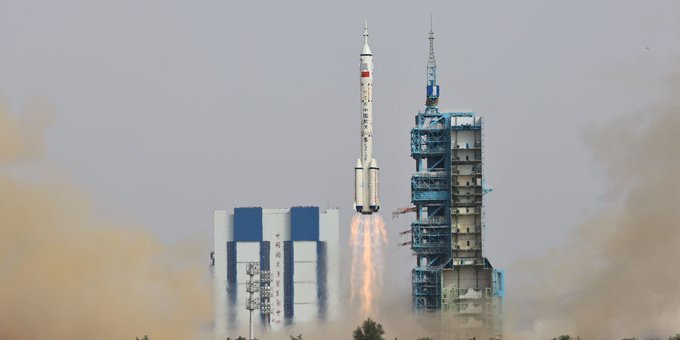On Tuesday, China launched a new three-person crew for its orbiting space station, with the goal of landing astronauts on the moon by the end of the decade.
The Shenzhou 16 spacecraft took launched atop a Long March 2-F rocket from the Jiuquan launch centre on the outskirts of the Gobi Desert in northwestern China shortly after 9:30 a.m. (0130 GMT) Tuesday.
The team, which includes China’s first civilian astronaut, will briefly overlap with three others currently aboard the Tiangong station before returning to Earth after finishing their six-month mission.
A third module was added to the station in November, and space programme officials announced on Monday that they intend to extend it as well as undertake a crewed voyage to the moon before 2030.
China developed its own space station after being denied access to the International Space Station. Owing to U.S. worries about China’s space programmes’ close ties to the People’s Liberation Army, the military wing of the ruling Communist Party.
With its first manned space mission in 2003, China became the third country, after the former Soviet Union and the United States. To send a person into space using its own resources.
Payload expert Gui Haichao, a professor at Beijing’s top aerospace research institute, will accompany mission commander Maj. Gen. Jing Haipeng. Who is making his fourth space voyage, and spacecraft engineer Zhu Yangzhu is on this newest mission.
The crew will stay aboard the station for around five months, conducting scientific research and performing routine maintenance.
The mission takes place against the backdrop of a rivalry with the US for new space achievements. This has been mostly amicable, but it also reflects their increasing competition for leadership and influence in the domains of technology, military, and diplomacy.
American spending, supply chains, and capabilities are thought to provide it with a major advantage over China, at least for the time being. China, on the other hand, has broken through in some areas. Returning samples from the lunar surface for the first time in decades and landing a rover on the moon’s less visited far side.
Meanwhile, the US hopes to re-enter astronauts on the moon’s surface by the end of 2025. As part of a renewed commitment to crewed missions. Assisted by private sector actors such as SpaceX and Blue Origin.
Aside from their lunar programmes, the two countries have already landed rovers on Mars. And China aims to follow the United States in landing a spacecraft on an asteroid.
